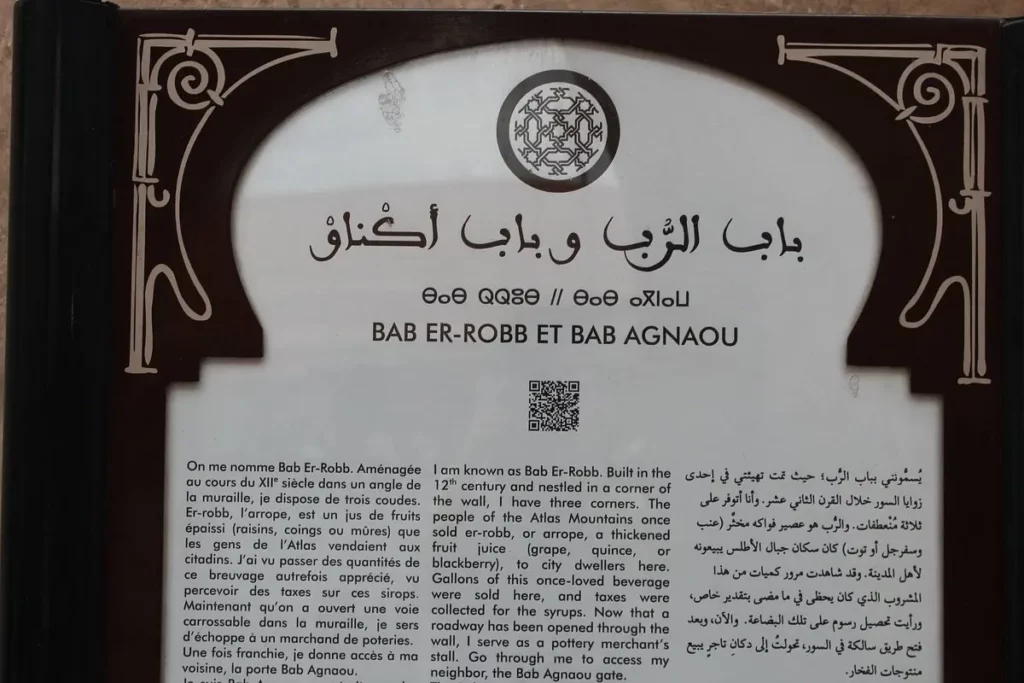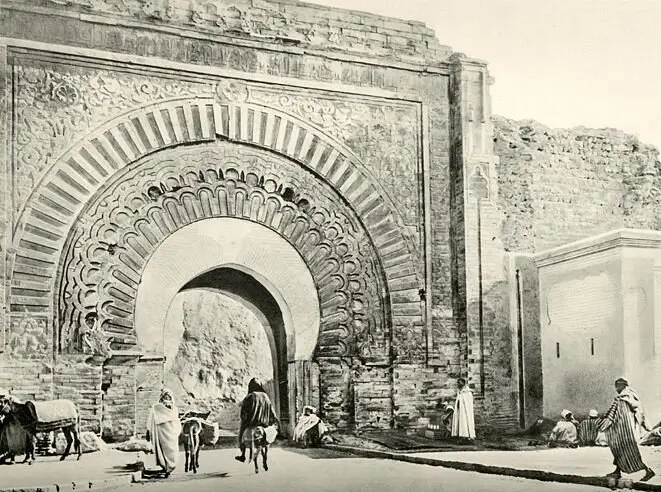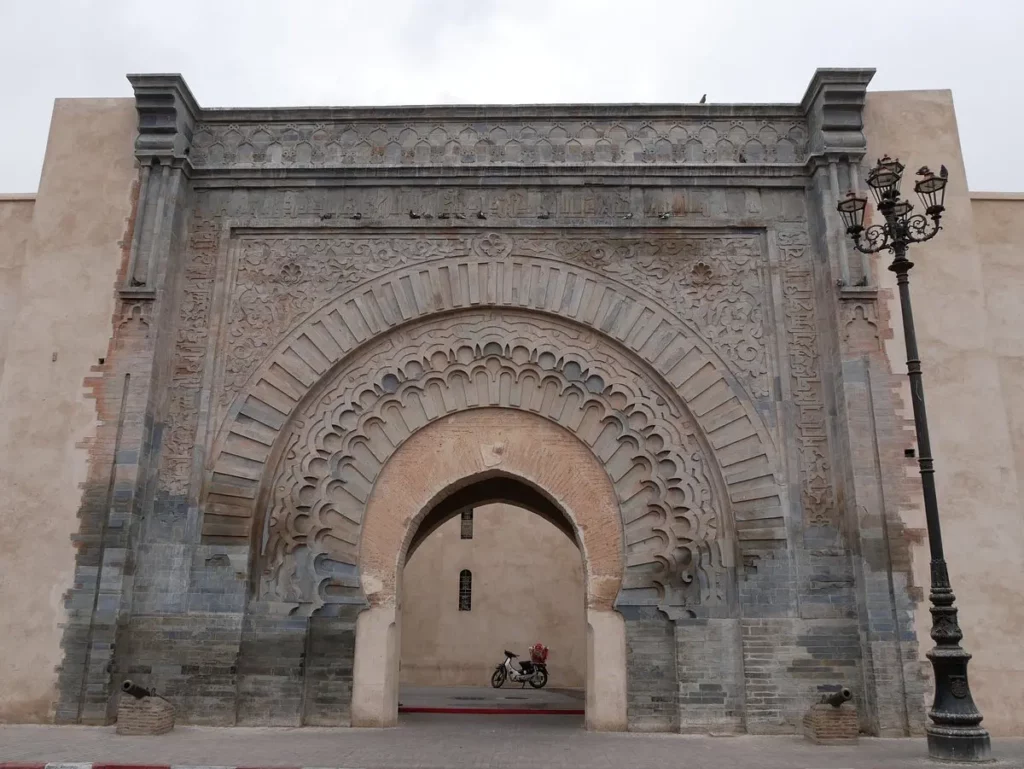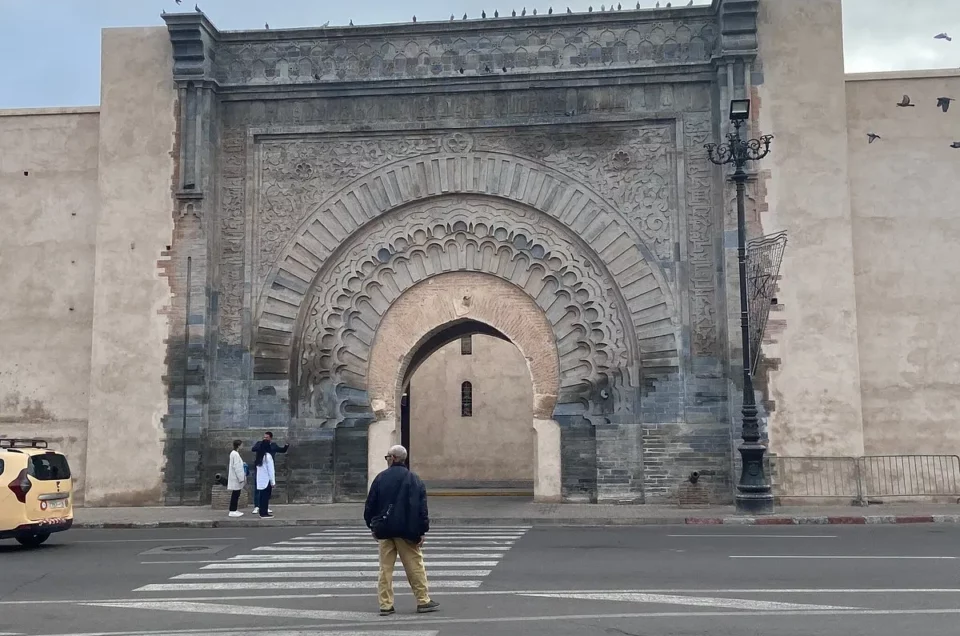
Bab Agnaou is not just a gateway; it’s a monumental testament to Marrakech’s rich history. This 12th-century marvel stands as a relic of the Almohad Berber dynasty, a period that saw Marrakech at the heart of a vast Islamic Caliphate. In this comprehensive guide, we delve into the fascinating history, architecture, and cultural significance of Bab Agnaou, while also offering practical tips for tourists to make the most of their visit.
The Historical Significance of Bab Agnaou

The Almohad Era
Bab Agnaou was constructed during the Almohad period in the 12th century. It served as a grand entrance to the Caliphal Kasbah, the administrative and military hub of the time. The gate is not just a military structure but also a symbol of power, adorned with intricate geometric and floral motifs.
The Name’s Origin
The name “Bab Agnaou” has two possible etymologies. One theory suggests it is derived from “gnaoua,” referring to the dark-skinned Berber Gnaoua people. Another theory posits that the gate was originally flanked by two towers, which have since disappeared, and was called the “gate of the ram without horn.”
Architectural Marvels

The Design
The gate’s architecture is a blend of military and symbolic elements. It features four semi-circular arches, made of blue-grey sandstone from Gueliz, and is adorned with kufic calligraphy and Quranic verses.
The Ramparts of Marrakech
The fortified walls of Marrakech, of which Bab Agnaou is a part, extend over 19 km and are punctuated by 19 gates. These walls were initially built in 1122 during the Almoravid dynasty and were later expanded by the Almohads.
A Tourist’s Guide to Bab Agnaou
Best Time to Visit
The gate is an outdoor monument, making it accessible year-round. However, the early morning or late afternoon offers the best light for photography.
Nearby Attractions
Don’t miss the Koutoubia Mosque and the Saadian tombs, which are within walking distance from Bab Agnaou.
Practical Information
The monument is accessible without an entrance fee. However, note that renovation works were underway as of 2020/2021, so some scaffolding may be present.
The Kasbah District: Beyond Bab Agnaou
The Royal Palace
Once you pass through Bab Agnaou, you enter the Kasbah district, which was the royal residence during the Almohad dynasty. The area is rich in history and architecture, making it a must-visit.
The Mansourian Kasbah
The district reached its zenith under the rule of Abu Yusef Yaqub Al Mansour, and it was during this period that Marrakech became a major city in the medieval Muslim West.
Cultural Significance
Bab Agnaou in Literature and Art
The gate has been a subject of fascination for writers and artists alike. Its intricate designs have inspired countless works of art, and its history has been the subject of numerous scholarly articles.
Festivals and Events
Bab Agnaou serves as a backdrop for various cultural events and festivals in Marrakech. From traditional music performances to historical reenactments, the gate becomes a lively hub during these times.
Tips for Photographers
The Golden Hour
For those looking to capture the perfect shot, the golden hour—just after sunrise or before sunset—offers the best natural lighting conditions.
Angles and Perspectives
Experiment with different angles to capture the gate’s intricate details. A wide-angle lens is recommended for capturing its grandeur.
Bab Agnaou is more than just a gate; it’s a journey through time that offers a glimpse into Marrakech’s glorious past. Whether you’re a history buff or a casual tourist, this monumental gateway promises an enriching experience.

